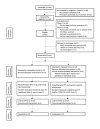A Community-Based Physical Activity Counselling Program for People With Knee Osteoarthritis: Feasibility and Preliminary Efficacy of the Track-OA Study
- PMID: 28652228
- PMCID: PMC5504340
- DOI: 10.2196/mhealth.7863
A Community-Based Physical Activity Counselling Program for People With Knee Osteoarthritis: Feasibility and Preliminary Efficacy of the Track-OA Study
Abstract
Background: Physical activity can improve health outcomes in people with knee osteoarthritis (OA); however, participation in physical activity is very low in this population.
Objective: The objective of our study was to assess the feasibility and preliminary efficacy of the use of wearables (Fitbit Flex) and telephone counselling by a physical therapist (PT) for improving physical activity in people with a physician-confirmed diagnosis of knee OA, or who have passed 2 validated criteria for early OA.
Methods: We conducted a community-based feasibility randomized controlled trial. The immediate group (n=17) received a brief education session by a physical therapist, a Fitbit Flex activity tracker, and a weekly telephone call for activity counselling with the physical therapist. The delayed group (n=17) received the same intervention 1 month later. All participants were assessed at baseline (T0), and the end of 1 month (T1) and 2 months (T2). Outcomes were (1) mean moderate to vigorous physical activity time, (2) mean time spent on sedentary behavior, (3) Knee Injury and Osteoarthritis Outcome Score (KOOS), and (4) Partners in Health Scale. Feasibility data were summarized with descriptive statistics. We used analysis of covariance to evaluate the effect of the group type on the outcome measures at T1 and T2, after adjusting for blocking and T0. We assessed planned contrasts of changes in outcome measures over measurement periods.
Results: We identified 46 eligible individuals; of those, 34 (74%) enrolled and no one dropped out. All but 1 participant adhered to the intervention protocol. We found a significant effect, with the immediate intervention group having improved in the moderate to vigorous physical activity time and in the Partners in Health Scale at T0 to T1 compared with the delayed intervention group. The planned contrast of the immediate intervention group at T0 to T1 versus the delayed group at T1 to T2 showed a significant effect in the sedentary time and the KOOS symptoms subscale, favoring the delayed group.
Conclusions: This study demonstrated the feasibility of a behavioral intervention, supported by the use of a wearable device, to promote physical activity among people with knee OA.
Trial registration: ClinicalTrials.gov NCT02313506; https://clinicaltrials.gov/ct2/show/NCT02313506 (Archived by WebCite at http://www.webcitation.org/6r4P3Bub0).
Keywords: digital technology; exercise; fitness trackers; osteoarthritis; physical activity; sedentary behavior; sedentary lifestyle; wearables.
©Linda C Li, Eric C Sayre, Hui Xie, Cam Clayton, Lynne M Feehan. Originally published in JMIR Mhealth and Uhealth (http://mhealth.jmir.org), 26.06.2017.
Conflict of interest statement
Conflicts of Interest: None declared.
Figures


References
-
- Ottawa Panel Ottawa Panel evidence-based clinical practice guidelines for therapeutic exercises and manual therapy in the management of osteoarthritis. Phys Ther. 2005 Sep;85(9):907–71. - PubMed
-
- Zhang W, Moskowitz RW, Nuki G, Abramson S, Altman RD, Arden N, Bierma-Zeinstra S, Brandt KD, Croft P, Doherty M, Dougados M, Hochberg M, Hunter DJ, Kwoh K, Lohmander LS, Tugwell P. OARSI recommendations for the management of hip and knee osteoarthritis, part I: critical appraisal of existing treatment guidelines and systematic review of current research evidence. Osteoarthritis Cartilage. 2007 Sep;15(9):981–1000. doi: 10.1016/j.joca.2007.06.014. http://linkinghub.elsevier.com/retrieve/pii/S1063-4584(07)00234-8 - DOI - PubMed
-
- McAlindon TE, Bannuru RR, Sullivan MC, Arden NK, Berenbaum F, Bierma-Zeinstra SM, Hawker GA, Henrotin Y, Hunter DJ, Kawaguchi H, Kwoh K, Lohmander S, Rannou F, Roos EM, Underwood M. OARSI guidelines for the non-surgical management of knee osteoarthritis. Osteoarthritis Cartilage. 2014 Mar;22(3):363–88. doi: 10.1016/j.joca.2014.01.003. http://linkinghub.elsevier.com/retrieve/pii/S1063-4584(14)00016-8 - DOI - PubMed
Associated data
LinkOut - more resources
Full Text Sources
Other Literature Sources
Medical
Miscellaneous

